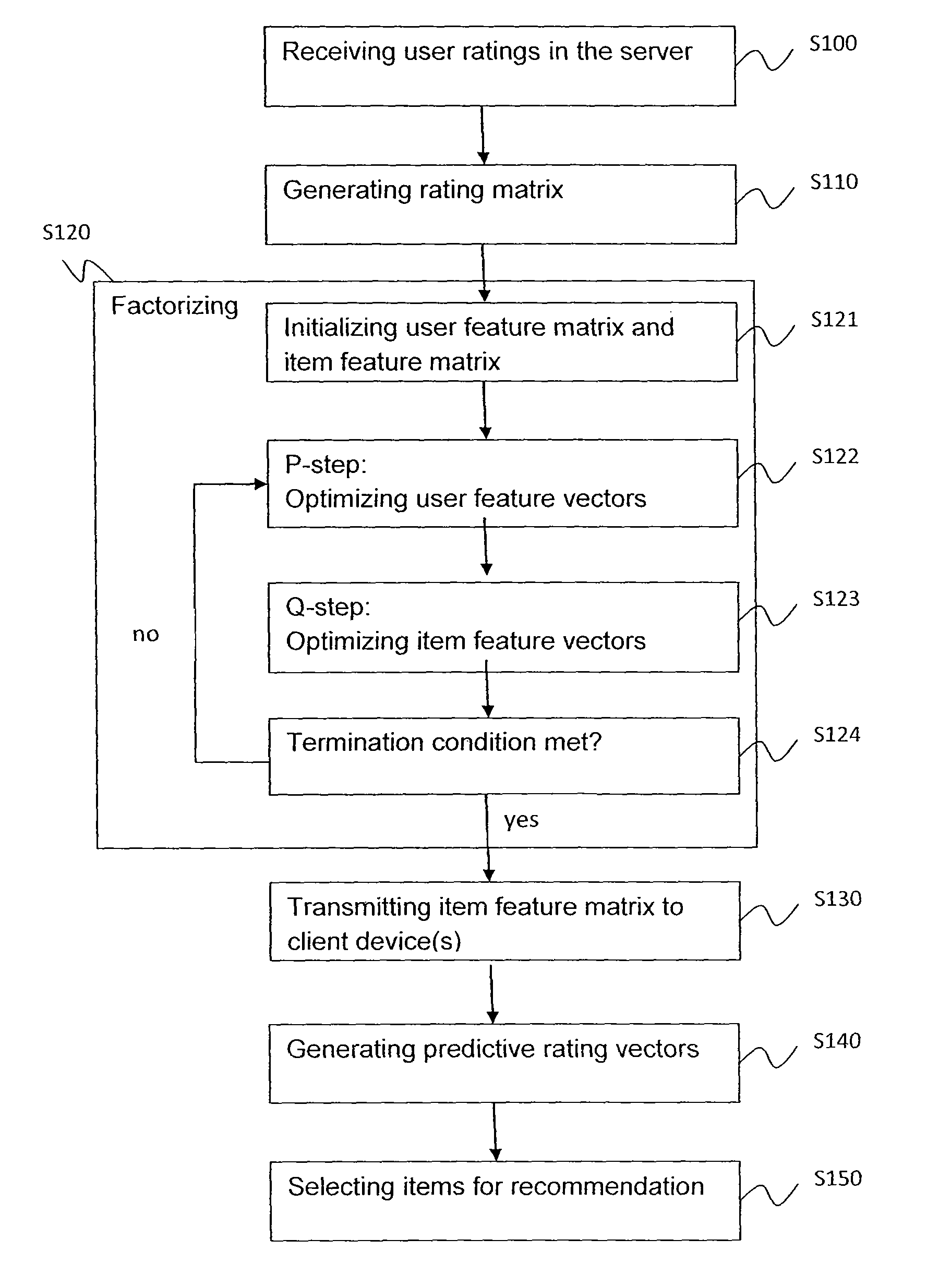Recommender systems and methods using modified alternating least squares algorithm
a technology of alternating least squares and recommendation systems, applied in the field of personalized content provision, can solve the problems of requiring a substantial computational power in the client device, and unable to meet the needs of individual users or clients to browse through all available products or services personally
- Summary
- Abstract
- Description
- Claims
- Application Information
AI Technical Summary
Benefits of technology
Problems solved by technology
Method used
Image
Examples
Embodiment Construction
[0081]Recommender systems suggest personalized recommendations on items to users based on various kinds of information on users and items. Recommender systems intend to model user preferences on items and aim to recommend such items the user will probably like. User preference information is twofold: explicit and implicit feedback. The former mainly includes opinion expression via ratings of items on a predefined scale, while the latter consists of other user activities, such as purchasing, viewing, renting or searching of items.
[0082]The commercial applications of recommender systems have the ultimate goal of profit maximization. However, due to business reasons revenue data are hardly available, therefore in the scientific context one may optimize recommender algorithms for such performance measures that supposedly correlate well with the business goals. For this purpose error measures are typically applied, such as the root mean square error (RMSE) or the mean absolute error (MAE...
PUM
 Login to View More
Login to View More Abstract
Description
Claims
Application Information
 Login to View More
Login to View More - R&D
- Intellectual Property
- Life Sciences
- Materials
- Tech Scout
- Unparalleled Data Quality
- Higher Quality Content
- 60% Fewer Hallucinations
Browse by: Latest US Patents, China's latest patents, Technical Efficacy Thesaurus, Application Domain, Technology Topic, Popular Technical Reports.
© 2025 PatSnap. All rights reserved.Legal|Privacy policy|Modern Slavery Act Transparency Statement|Sitemap|About US| Contact US: help@patsnap.com



